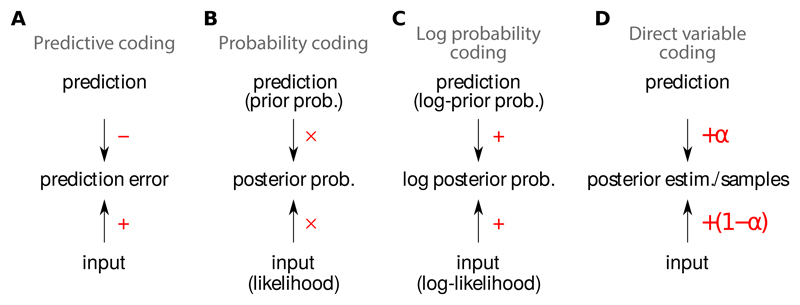Figure 1.
Neural arithmetics corresponding to different representational schemes. A. Predictive coding: the difference between the input and a prediction is computed, and the resulting prediction error is represented in the response of neurons. B. Probability coding: the response of each neuron represents the posterior probability associated with a particular value (or range of values) of the latent variable(s). Thus, to compute their firing rate, neurons need to multiply their inputs, representing the likelihood, and the prediction, representing the prior. C. Log-probability coding: the response of each neuron represents the logarithm of the posterior probability associated with a particular value of the latent variable(s), thus it needs to sum its inputs, representing the log likelihood, and the prediction, representing the log prior. D. Direct variable coding: the response of each neuron represents the value of a different latent variable. The resulting population codes typically interpolate between what would be dictated by inputs or predictions alone.

